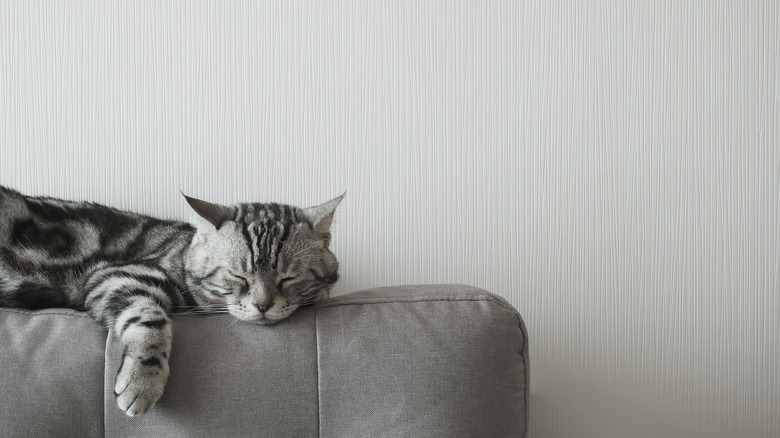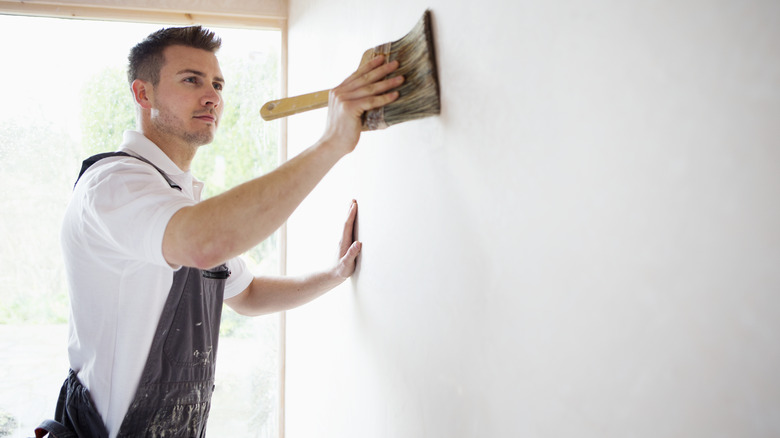How To Achieve The Woven Strié Paint Look On Your Walls
Faux-textured walls and painting techniques have always been a surefire design trick to add dimension, depth, and visual interest to walls. Usually added during the paint application process after the base coat is applied, these effects can be created from various materials and processes involving fabrics, paper, sponges, and brushes, which are used to manipulate other shades or glazes as they are applied. This approach usually achieves a mottled or lined effect.
Strié — which means "ridged" or "streaked" in French — is a painting technique that adds subtle lines or crosshatches to the base coat using a dry paintbrush, which produces the effect of ribbed or woven fabric on walls with only paint. Strié is a perfect technique to give the illusion of luxuriously expensive fabric wallpaper without the expensive price tag or installation costs. Depending on the colors used, it's a look that fits into a number of decor schemes, including more contemporary rooms, farmhouse and cottage spaces, or boho retreats.
Creating strié effects
Strié painting is one of the easiest faux painting techniques to master since it mostly just involves brush stroke application. For your top coat, you will want a color that contrasts with your base coat. For best results, combine this color with an acrylic glaze or purchase a pre-made shade with glaze already mixed in. This will allow a thinner, more translucent, coat and make it easier to work with. Experts suggest a 5:1 ratio of paint to glaze.
After you have applied your primer and base coat, use a roller to apply your glaze coat in vertical strokes. Moving quickly before it dries, use a large dry bristle brush to create vertical lines, working from top to bottom of the painting surface. You will wall a continuous line if possible since it can be more difficult to match up different segments.
Move horizontally along the wall, overlapping where each new vertical stroke begins to ensure full coverage. Before priming, you will also want to make sure to address any existing texture or imperfections in the wall to create a smooth surface, since dips, holes, or cracks can affect your brushstrokes.
Other tips for creating a strié finish
While many opt to create solely vertical strié lines, which give a subtle textured pinstripe look to the wall, others crosshatch the vertical strokes with horizontal ones using the same technique. This creates the woven look of materials like linen or burlap on the wall, creating even more of a sense of texture and visual interest.
You can also use more than one color of glaze, which increases the depth of your pattern, particularly great for modern and contemporary rooms. Choose contrasting or complimentary shades drawn from elsewhere in the room to pull it together. Many use a vertical strié to give the charming effect of old painted-over wood to new surfaces. Using a cross-hatch strié is a great solution for bathrooms in particular, where you can create a stylish woven spa-like bamboo wall texture without using paper or adhesives that may deteriorate in a room with a lot of moisture.

